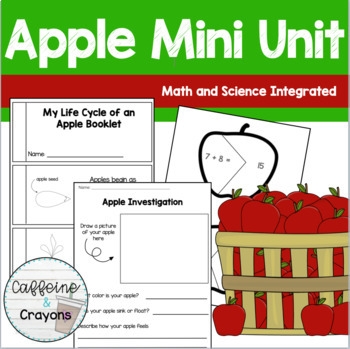First Grade Apple Mini Unit | Science and Math Integrated
- PDF
Description
Simple, low prep apple themed math and science activities are the perfect addition to your first grade apple unit. Each activity is standards based and aligned to your math and science content. Components of this unit can be extended to either kindergarten or second grade, depending on what you need.
In this packet you will find:
* A reference page for apple themed books, both fiction and nonfiction, the supplement your unit
* An apple math game, focusing on matching addition sentences within 20 with the sum. Each pair is self checking, as the lines to match the two pieces are unique for each puzzle. This activity also comes with a blank template, so this activity can be recreated for any topic you like (upper and lowercase letters, subtraction, etc). The template is not editable, and will need to be printed and written on, not used digitally.
* Apple addition page where students will use a picture to create an equation
* An apple investigation recording page to accompany any apple study you do. Students will need an apple to observe in order to complete this task. This can be done independently where each student has their own apple, or as part of a science station where one apple is observed by all students.
* A nonfiction, life cycle of apples booklet. Each page includes a picture that your students can color.





